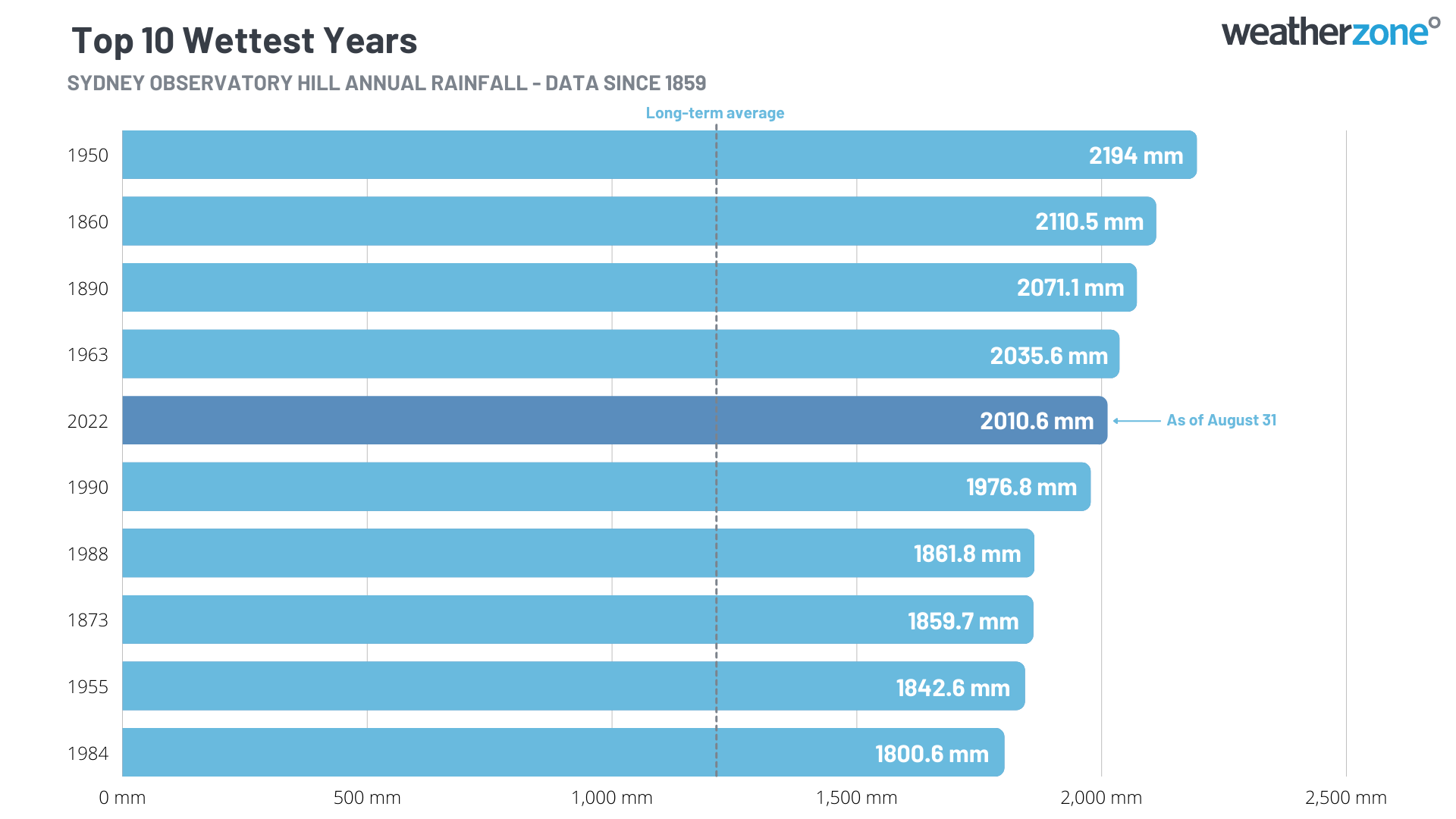Sydney just experienced its wettest January to August period in 164 years of records, with the city also obliterating a long-standing record for the shortest time to amass two metres rainfall in a single year.
The weather station at Sydney Observatory Hill, located next to the iconic Harbour Bridge, registered 2010.6 mm of rain between January 1 and August 31 this year. This is Sydney’s highest January-to-August total in records dating back to 1859, beating 1846.2 mm during the same period from 1950.
Despite only being 8 months into 2022, this is already Sydney’s fifth wettest year in 164 years of records.

But while four other years have also exceeded two metres of rain in Sydney, none did it anywhere near as fast as 2022.
This year, the Observatory Hill rain gauge tipped over 2000 mm on Friday, August 26. This was almost two months earlier than the previous fastest two-metre rainfall record, which was October 19 in 1950.

Sydney only needs to receive another 183.5 mm of rain to make this its wettest year on record. This feat is well within reach, considering the city’s long-term average September-to-December rainfall is 305.7 mm and above-average rain is anticipated over eastern NSW in the coming months. For more information, please contact us at apac.sales@dtn.com.






